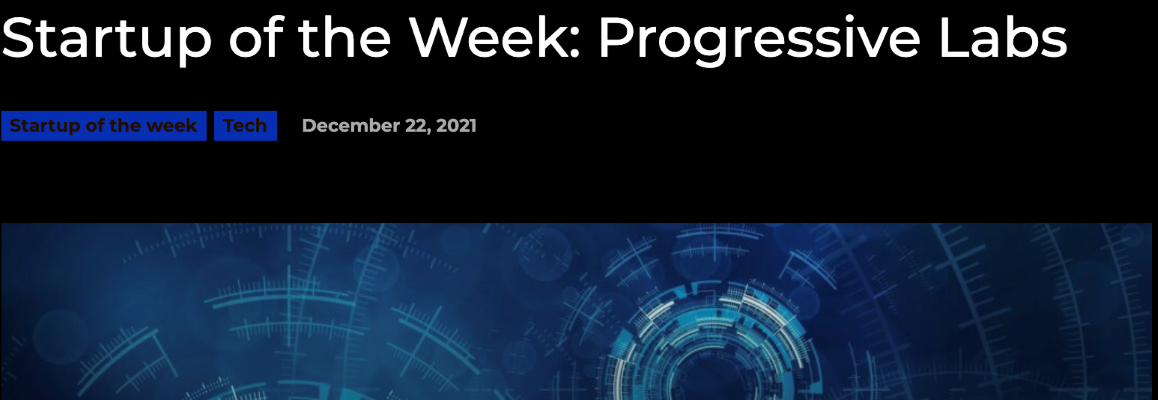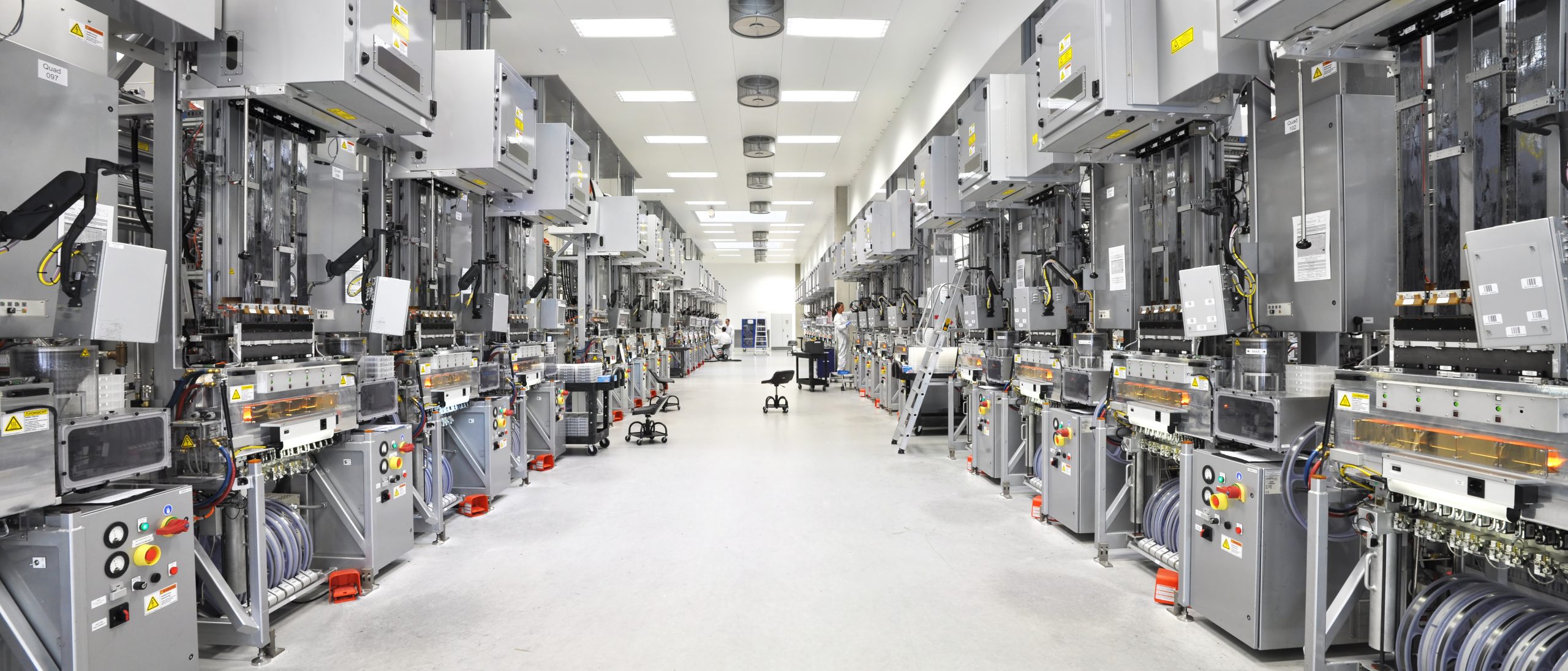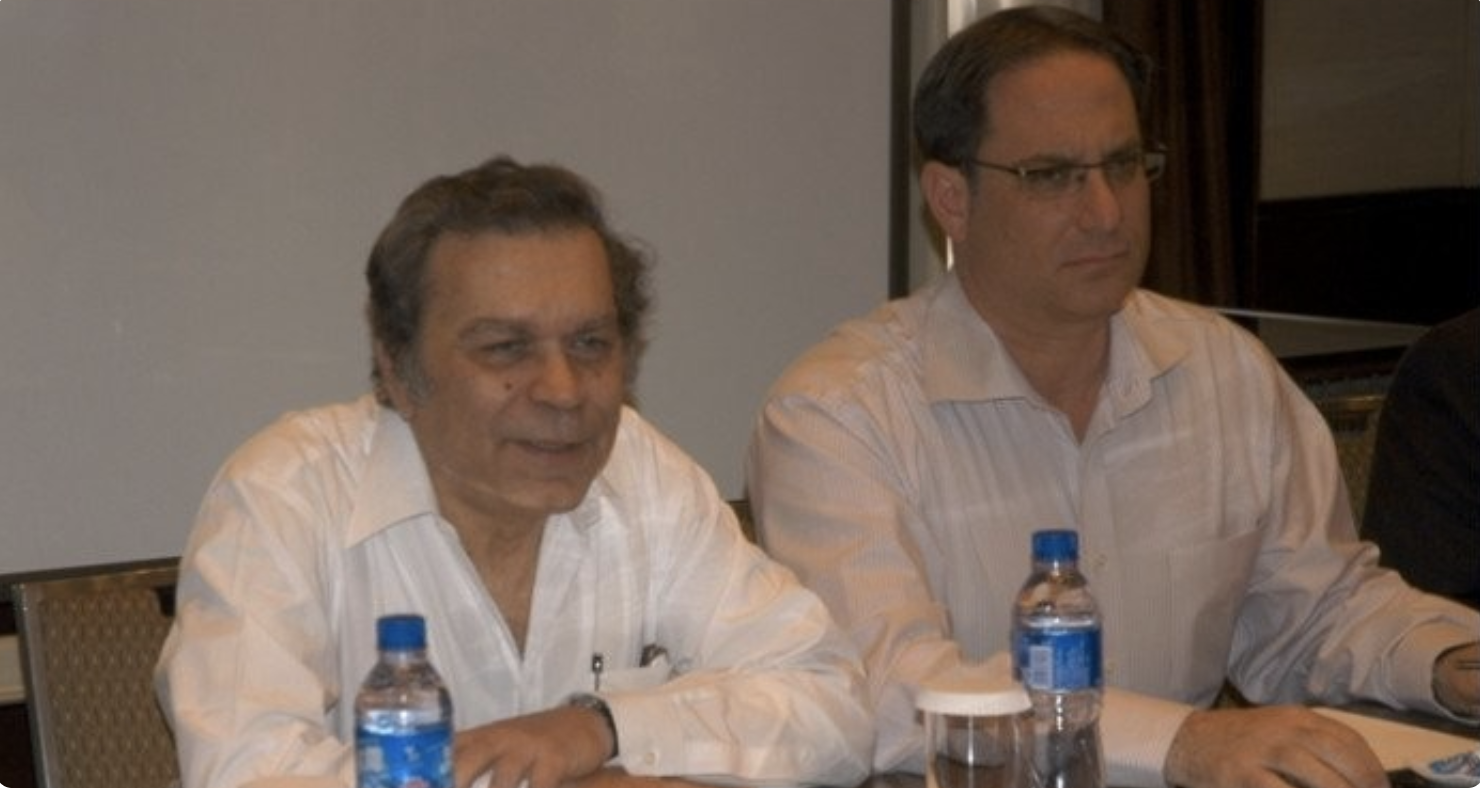The question, “Do people resist change?” is a question the Theory of Constraints (TOC) has been grappling with since its inception. In order to find a possible answer, it is helpful to look at the change process itself. TOC’s founder, the late Dr. Eliyahu M. Goldratt, offered a definition of the change process. Many articles, presentations and courses have elaborated his definition, described as the “3 Steps of Change.” These steps are:
1) What to change?
2) To what to change?
3) How to cause the change?
In this article, we will try to stand on a giant’s shoulders and take this subject one step forward. Additionally, for the new developments presented here, we will also give some practical insights on how to implement this process.
As we endeavor to answer the question, “Do people resist change?”, and to deeply understand the motivation of people and organizations when considering a major change, two additional questions should be asked and answered as part of the process. The first is a prerequisite question – “Why change?”
Jumping into the original first question –“What to change?” before answering the simple Why change? can contribute to the failure of those trying to generate improvement. How many times has someone come up with a brilliant idea, service, or product, and enthusiastically presented it to their superiors or to a potential client, only to be politely refused? In order to create any change, we first must agree on why we need to leave our comfort zones and jump into something that, although very possibly beneficial, almost certainly incorporates risks. Many surveys, as well as empirical experience (as gained from the stock exchange), have shown us that people will do much more to avoid pain than to gain pleasure. Very often the perceived pain of the change will block any benefits we obtain if we do not address “Why change?” in the correct way. It is not only a better verbalization of the topic, but it is a very practical issue, one that can be the difference between success and failure.
Inertia is one of the main forces that prevents managers from doing the right thing. Very often when we talk to executives about changing the way they manage their companies, the objection we hear is – “But we have a Strategy!” And when we ask, “Are you achieving your goals via this strategy?” the answer is usually “Not yet, but we will improve our activities and we will invest more effort, with more persistence and devotion.”
This reminds us the old story of how to catch a gorilla: Catching a gorilla is not an easy task, it is a powerful animal. The way to do it is to look for a big tree in the jungle with a small hole in it. Inside the hole you place bananas, and then you wait. When the gorilla smells the bananas, it pushes its hand into the hole to grab one. But there is a problem – the hole is too small to withdraw the banana when held within the gorilla’s fist. Now the Gorilla is stuck. So what does it do? It uses the ruthless force it has, shaking the tree and pulling as hard as it can to leave the trap, with increasing persistence and devotion – but with no results. The only action the gorilla could take in order to get its hand out is to leave the banana, but it doesn’t do so – it is against its nature to leave the banana. Now it is very easy to catch! It is employing a strategy that doesn’t work (using force) because it cannot make the paradigm shift of leaving the banana. Likewise, many management teams continue to pursue well-known strategies, using greater and greater force (exhausting their resources) – but the expected results do not appear. You cannot do the same thing with greater intensity, hoping for different results to come, when the problem is in the strategy. The question, “Why Change?” is dealing exactly with this topic – why do we need to depart old strategies sustained due to inertia, and explore new paradigm shifts to develop new working strategies? Can you, our readers, identify your (or your organization’s) banana?
An additional new aspect we must address exists after completing the change. Causing the change is not enough. From years of experience we have learned that even if we succeed in creating the paradigm shifts; even if we have changed some of the basic incorrect assumptions of the company; even if we achieve unprecedented results with TOC holistic projects, all the change is at risk once the new reality has arrived. We cannot impose certainty on uncertain reality – as time goes on conditions will change. The demands from the market will vary, raw materials availability and price may change, new players and new technologies will enter the market, and many more changes will come. In TOC projects we are trying to teach companies how to think in the TOC way. We are trying to provide the tools to face uncertainty; we are actually doing a knowledge transfer to the company. Still, when management gets hit by changing circumstances, the primary reaction is to return to their old habits. Did the old habits work in the past? No! But still we see that the first time the boat starts rocking, the instinct is to go back. Therefore, we must establish an additional question and the processes and tools to answer it – How to sustain the change?
In summary, two new steps should be added to the original 3 Steps of Change:
The Five Steps of Change –
- Why change? – a new step
- What to change?
- To what to change?
- How to cause the change?
- How to sustain the change? – a new step
What is our motivation to change? Is it not obvious that it is not only the advantages, but also the disadvantages/risks of not changing that are factored into our decision to move? A wonderful representation of the different motivations for a person to accept a change was presented by Dr. Goldratt as a marketing tool to promote his book “Isn’t is Obvious?” You can find it on YouTube under “Overcoming Resistance to Change – Isn’t It Obvious?”[1] If you haven’t seen it, please take a moment to view the video. It will help explain the terminology below.
In this, his final business novel, Dr. Goldratt wrote about retail and the beginning of the development of the TOC retail solution. But the real core subject he was highlighting was “Do people resist change?” In a nutshell, the decision to make a change is a balance between four forces: the plus and the minus of making the change, and the plus and the minus of not making the change. He used this perspective to explain a change offer from outside the organization – a change a sales person is offering a client or a prospect. We suggest the use of these techniques to analyze proposed changes internally, within management, as well.
Why change? Why do we need to add a prerequisite question? Dr. Goldratt felt the “why” of change was a given. But we have discovered that in most cases this is not so clear to management.
The customary approach people take is to focus on the positive reasons to change, or the “Pot of Gold.” Too often change is proposed defining only this element. “We can double our sales and profits in four years! …if we build a new plant…” or “if we invest in the state of the art ERP,” etc. But this approach often just results in setting off the various kinds of resistance discussed below, and the change proposal can die quickly. But in most cases in modern economics, the constraint of the company is not internal, in its ability to supply the demand, but rather the lack of a decisive competitive edge. The understanding of the need for a new strategy (or at least the need to explore new ways) is many times developed during this 4-element analysis.
We have done the Four Quadrant exercise with many managers, and we always start with the Alligator – trying to really understand it – whether it is a disruptive new technology entering the market, a major client facing difficulty, a new competitor dropping prices, or a down cycle in the global economy. What is the Alligator chasing us? How big and how close is it? Considering the pot of gold we envision, can we reach it with our present strategy or should we invest in really analyzing a new path?
The immediate challenges we face if we want to agree on the need to change are the reasons not to change. What are the risks we may encounter in the new way? Will the change actually bring the benefit we expect? And above all – how much we are in love with our Mermaid (our present comfort zone)? Analyzing these four forces help us to clearly answer the question “Why change?” Investing in evaluating the Alligator and really calculating the risk is not a common practice with many management teams. The sense of urgency gained in investing the efforts to analyze the size of the Alligator will generate the needed energy to continue the analysis.
1.2 What to change?
This is the first of the original three questions describing Dr. Goldratt’s view of change within the context of a Process Of On-Going Improvement (POOGI). Although the original three questions are discussed at length in many places, we think it important to stress a few major points here.
Most of our initial meetings with management and workers involve collecting problems, gripes, difficulties, etc. or as we call them in TOC “Undesirable Effects” (UDEs). The use of the word “effects” is a clear indication that there is a vibrant cause and effect relationship in the dynamics of our organizations. When we ask people to verbalize the problems in their companies, we almost invariably get a long list that generally corresponds to the lists generated by other similar companies. The same problems, gripes and difficulties exist in almost every organization around the globe. And from any of these undesirable effects, cause and effect logic can be used to trace them back to a core issue or conflict.
So when considering What to Change? we need to remember that problems, the things that people complain about, etc. are almost always effects of deeper conflicts which are generating multiple undesirable effects. Dealing with the problems without finding the core issue is the equivalent of a doctor treating only symptoms without regard to any underlying systemic disease. This fundamental belief – of the Inherent Simplicity of one real core problem that generates the majority of the undesirable effects (regardless of the complexity of the situation), is one of the pillars of the TOC thinking.
If we are unaware of the cause and effect relationships among our list of problems, we will be likely to simply sort and prioritize them, and try to tackle the biggest problems first. Unfortunately gains achieved using this method have limited efficacy and tend to be temporary. Since the core conflict has not been addressed, the same problem or a similar one will surely resurface soon.
Using the TOC Thinking Processes “Three-Cloud”[2] approach is an excellent way to identify the core issues (core conflicts) in an organization. In this method, we express three diverse problems as conflicts, distill them down to a single core conflict, and build a Current Reality Tree (CRT) that describes the cause and effect relationships from the core conflict to the undesirable effects. If we successfully address a core conflict, we find that not only one, but multiple problems are eliminated or substantially improved.
Bottom line: Remember to always choose a core issue or conflict as your target for What to Change? Rather than incremental improvement, this practice offers a quantum leap of improvement for your organization.
1.3 To what to change?
Once we have decided What to change? the next obvious question is To what to change? How do we choose the best, most effective strategy, processes, tools, methods, etc. for reaching a superior future state? How can we know that our choice is best? Fortunately, the Theory of Constraints and the Thinking Processes can help us here as well. Consider the undesirable effects that have been linked with the core conflict on the Current Reality Tree. Let’s look at a few common UDEs:
- Suppliers are late
- We have parts stock outs
- Machines break down
- People are not always present, available, or properly trained
- Engineering is late or needs to be corrected
What is common about all these UDEs? There is something remarkable about them. Each one represents some kind of delay, meaning that we cannot complete our work as quickly or economically as we would like. This results in lead times being extended and due dates being jeopardized. In order to meet our due dates, we might be forced to pay a lot of overtime, or if it is a project, to cut scope or delay features. In other words, the UDEs generated by our core conflicts usually impede flow.
Is this important? Consider the words of Taiichi Ohno, father of the Toyota Production System, giving a concise explanation of Toyota’s efforts:
All we are doing is looking at the time line from the moment the customer gives us an order to the point when we collect the cash. And we are reducing that time line.”[3]
To Goldratt as well as Ohno, flow (and therefore lead time) was a primary consideration of doing business. It is more important than cost or any other consideration, because cost is directly influenced by flow. In his article, Standing On The Shoulders of Giants, Dr. Goldratt introduced us to something he called the Four Concepts of Flow, tracing them back as far as Henry Ford:
- Improving flow (or equivalently lead time) is a primary objective of operations.
- This primary objective should be translated into a practical mechanism that guides the operation when not to produce (prevents overproduction).
- Local efficiencies must be abolished.
- A focusing process to balance flow must be in place.
So when considering To what to change? it is to our greatest benefit that improving flow should also be our primary objective. A solution that complies with the Four Concepts of Flow is the best way to ensure a superior future.
Given Dr. Goldratt’s conviction on the subject, it should be no surprise that all the applications of the Theory of Constraints past, present and future do and will meet the requirements of the Four Concepts of Flow.
The practical tools we have in TOC in order to have the clarity to answer the question To what to change? are the TOC Flow Applications (like Critical Chain Project Management, Drum-Buffer-Rope Production Management, Make To Availability, Pull Distribution and more) and the TOC Business Applications (like Solution for Sales, Pay-Per-Click and more.) These are the building blocks to construct powerful answers to the question To What To Change? Deeply understanding these building blocks allows us to create tailor-made solutions for each company, specific to its unique reality. Good examples of such specific solutions that were developed from the basic applications are the High-Touch-Time DBR and Flow-lines solutions.
1.4 How to cause the change?
Once management has gained the clarity it needs for agreement to change (by using the quadrant of the four forces), has clearly identified and understood the core conflict, and has chosen the specific TOC application for removing the conflict, the question turns to How to cause the change? Depending upon the size of the change proposed, the TOC Thinking Processes can again provide us with the proper tools.
For small or single-issue fixes, the Transition Tree (TrT) and Prerequisite Tree (PRT) may be all that you need. Both tools help identify the things you are lacking and the obstacles you may face in making a change. But for any large or holistic change or implementation, the Strategy & Tactics Trees (S&T) are most appropriate. This thinking process is used not only to capture the descriptions of planned changes, but also the specific objective of each change (the strategy or “what for” of the change) and the required actions (the tactic or “how to” of the change). Also, because any change is only as valid as the assumptions upon which it is based, the S&T structure allows you to define and communicate all the crucial assumptions related to the planned change(s).
There are a number of generic S&T templates available for various different environments. In addition, with expert help S&T trees can and should be modified (or even built from scratch) to help lay out a detailed “road map” for the change or implementation – addressing five additional questions for each action to be taken for successful execution:
- Why do we need a new strategy (Necessary Assumption)?
- What should our new strategy be?
- What information helps us to select the best tactic(s) for meeting our strategy, and why do we claim the strategy is both possible and better than other alternatives (Parallel Assumptions)?
- What should the specific changes in processes, policies or measurements (tactics) be?
- Is there anything else we need to be aware of when implementing this tactic (Sufficiency Assumptions)?
Properly constructed S&T trees contain all the necessary and sufficient knowledge to remove the core conflict, build a clear road map for improvement, and establish a sustainable foundation for the future growth and stability of your organization. How much of the above knowledge is really properly defined, documented, communicated and systematically validated in most organizations today? And even it is documented by the company (or a consultancy firm hired to do it), how many times it is communicated in a way or with a tool that makes the picture logical and clear to all stakeholders?
One of the major challenges that organizations face is clearly defining and communicating the necessary and sufficient elements of change, the required sequences of these changes, and the related contributions of all functions within the organization and all levels within these functions? The S&T trees are the answer to these challenges.
Any Manager or employee who does not know or understand his or her contribution to the organization’s goal may question their own contribution or that of others, and tend to feel disempowered due to gaps between authority and responsibility. They may face tension between local vs. global, or short vs. long-term optima, and become frustrated, which can result in disharmony within the organization. Any disharmony jeopardizes the achievement and sustainability of organizational goals. Dr. Goldratt called these conflicts “Engines of disharmony,” for which we need to find practical ways to reduce or prevent from occurring. Removing these engines of disharmony is another reason for the development of the Strategy and Tactic Trees.
If the S&T tree is the main tool to cause the change at the organization level, causing the change must also be taken care of at the individual level. During the process of teaching the S&T tree we are collecting all the “Yes, but…” comments coming from the audience, but this is a very limited view on the personal level of the recalcitrance coming from people. The un-verbalized question of “what is there for me?” must be addressed. Not addressing these questions will block any opportunity to cause the change. Better understanding of peoples’ personal reservations was provided by Dr. Goldratt in the “Layers of Resistance,” which should be also updated according to the present understanding of the 5 steps of change.
There are different kinds of resistance. Not all of them exist in every situation, but if they do, they must be recognized and peeled off in a logical sequence. Trying to peel of an internal layer without first peeling an external one will only intensify the resistance. And all of them are answering different aspects of “what is there for me?”
|
Why Change?
|
Layer #1 – We do not need to change!
|
|
What to Change?
|
Layer # 2 – There is no problem!
|
|
Layer # 3 – The problem is different!
|
|
Layer # 4 – The problem is out of our/my control!
|
|
What to change to?
|
Layer # 5 – I have a different direction for the solution!
|
|
Layer # 6 – The solution doesn’t address the whole problem!
|
|
Layer # 7 – Yes, BUT the solution has negative ramifications!
|
|
How to cause the change?
|
Layer # 8 – Yes, BUT there are obstacles to implement the solution!
|
|
How to sustain the change?
|
Layer # 9 – Yes, BUT the conditions have changed!
|
Interesting to understand are the real issues are behind each layer. Layer #1 was discussed in length in paragraph 1.1 above. In Layers #2 and #3 the main issues can be: Disagreement about the target, disagreement about the current situation, disagreement on the size of the problem (it is not a serious/real problem), fear of being blamed, and fear of making the change at all (or the way this person has perceived this change).[4] In Layer # 4 the main issues can be: past experience of failure, or belief in the inability to change the situation or the organization. In layer # 5 the issues are usually fear of making this particular change, the belief that there is better solution, and/or the lack of belief in the benefits of the proposed solution. In Layers # 6, #7 and # 8 the issues can be an attempt to get more, or even an honest objection that we have not covered the whole problem. Layer # 9 is discussed in depth in 1.5 below.
Understanding the layers of resistance helps us to deal with overcoming rational resistance to change, but because we are dealing with people, there is also a need to be aware of and to overcome emotional and psychological resistance to change. These barriers can be: Layer # 1 – Intolerance to Ambiguity – the extent by which a person feels threatened by uncertainty. Layer # 2 – Social Pressure – the extent by which a person is in conformity to a group, obedience to authority, and acting according to a social role. Layer # 3 – Individualism – the level of non-conformity of the person, guarding one’s independence, authenticity and the need for freedom. Layer # 4 – Escalation – a resistance to change caused by the feeling his past investment was expended in vain. And Layer # 5 – Sense of Fairness – the feeling that past results were not distributed fairly, so now I will resist in order not to be treated unfairly again.
1.5 How to sustain the change?
Years of experience have taught us that even if we succeed in creating a new and successful reality for a company by implementing a holistic TOC transformation, all the progress is at risk when circumstances bring a shift in reality (or in the perception of reality), or when there is a change in the expectations of the stakeholders. When management gets hit by a real (or perceived) shift in reality, the primary reaction is to return to old habits. Did the old habits work in the past? Probably not, this was one of the main generators for the change in the first place. Did the new TOC methods bring unprecedented results? Please let’s assume the answer is yes (and we have many examples to prove it). But still we see that the first time the boat starts rocking, the instinct is to go back. Therefore, we must establish an additional question and the processes and tools to answer it – How to sustain the change?
The way to sustain a change is divided into three different elements – how we measure and monitor reality, how we fine tune the solution to the shifting reality, and how we defeat the reflex of going back to our old habits once we are facing a real challenge.
All companies measure their performance and financials. Unfortunately, not all companies measure all the right things at the right time. Measuring the right things means really understanding what the parameters are that are most relevant to the company’s clients. For example – in companies that sell to resellers (from stock), it is very seldom that we find a measurement of the inventory turns of their products at their clients – when in reality inventory turns is the MOST important measure for resellers. Also seldom do we find companies measuring Throughput Dollar Days (TDD) – i.e. the dollar value of late delivery as compared to the original promised date, when reliability is in some cases (like in Projects or A-type assembly plants) is the client’s most important measure.
Additionally, too many times the measurements are done at long intervals, too long for the company to be able to react. The understanding that the company must have a closed loop of information with its markets is not what we find as common practice. Measuring the right things at the right time is a must for the company to react and make the necessary recovery plans just as the problem occurs, and not to be forced to take care the problem only once it becomes a crisis.
An additional aspect of measuring correctly is communicating the results internally. In our quest to sustain the change, we are constantly building internal buy-in at all levels. Using a vehicle to share the results across the organization communicates the success of the change and strengthens consensus for the change. We can refer to this vehicle as a dashboard.
But even having the right daily/weekly/monthly dashboard is not enough. Keeping the ship on course by having the correct measurements at the right time, and fixing the route over stormy seas will not help us when a previously unknown iceberg drifts into our path and there is a need to make a real change of course. We must check our initial assumptions, the ones we made when we designed and built the initial solution, as reality may shift significantly and our initial assumptions may be no longer valid.
The process to check the relevancy of the solution in a changing reality (as well as to what level a company is implementing a TOC project correctly) is the Audit. How to conduct a successful audit is planned for a future article, but we would like to suggest you consider the following subjects once you have made the decision to conduct an audit.
A holistic TOC project is designed to dramatically improve the growth, stability and harmony of the company. Therefore, we need to check not only the financial state of the company (Are we growing? At what rate? etc.) but also the trends (are we building the infrastructure needed for stability?) To do this we need to monitor if we have implemented our tactics properly, if excess capacity is revealed, if DDP is improving, whether inventory turns, Throughput Dollar Days and other measurements show us we are enabling the company to become a different breed.
Finally, we also need to examine Harmony – manifestations of disharmony and spoken and non-spoken conflicts. When disharmony exists it must be considered as a threat to the effectiveness of the project. Are there conflicts outside the project which will distract us from our focus? If conflicts remain as time goes by, our project will become part of the conflicts and not the company’s solution. In the future article on conducting Audits we will explain tools like Mystery Investigation, Local vs. Global Optima considerations, and additional relevant Thinking Processes we use today.
A word of clarification – the dashboard should not neglect additional signals that the TOC measures do not cover today, but are still very important early warnings. Examples are issues like too low cash flow, too many good people leaving the company, emergence of a new competitor, or change of a competitor offering to the market or a new technology.
The biggest challenge is how to institutionalize the change, how to create a culture that provides promise the company is really adopting TOC thinking for years to come – for new recruits, and for any change reality presents us. This change of culture can be achieved by establishing a learning organization that is pushing POOGI at all levels, and by adopting three basic behaviors to be governed and led by all levels of management – non-blaming ethics, delegating complexity upwards, and using logic.
Let your people work in teams and document all the processes and changes made during the TOC holistic project. This personal involvement will create the notion it is “our” change and increase the buy-in, and additionally will be the base for newcomers to learn the ways this company is working.
Establish an internal TOC School with certifications. Build a wider and deeper TOC knowledge and understanding base, because if people are trained only on the exact needed solution, any deviation in reality (that will inevitably happen) will throw the implementation off track and push the company back to the comfort zone of old practices. Only real understanding of TOC thinking will enable the company to face new challenges and do the necessary changes needed to continue the TOC journey.
The changes in Behavior –
- No Blaming – “People are good”. Blaming people – managers, workers, suppliers, or another “silo” is not advancing or helping the company. People are not conditioned to hurt me/us. The way they are measured probably pushes them to behave in a certain way that we cannot understand. Using Clouds to verbalize and solve conflicts is a work ethic that must be adopted in order to sustain the change. Revisiting “personal performance measurements” is needed, as the company may driving the wrong behavior because of wrong measurements.
- Delegating complexity upwards – sometimes we face real problems that are above our level of authority to solve. In many companies we find that asking for help is translated as evidence of weakness. A culture that encourages everyone not to hide “problems”, but rather to ask for help is the promise for a right working environment. People will not misuse it, and managers will have the opportunity to show leadership, and to really solve the disturbances of flow that causing the “problems”.
- Using logic – analyzing reality, finding the core problem, using the Five Focusing Steps to focus attention on the constraint – using the huge ocean of TOC knowledge – enables us to think! Intuition is extremely important, but only if it used with logical tools. Please remember Dr. Goldratt’s main lesson – In order to think clearly we must train ourselves to overcome our ingrained perception that reality is complex, that conflicts are given, that people are not always good and that we know. Remember – any situation can be substantially improved.
This brings us back to the original question, “Do people resist change?” Goldratt’s conclusion is people do not naturally resist change. It is only when they cannot clearly see the benefits (both organizational and personal) of the proposed change that they (often legitimately) resist. With the tools and techniques Goldratt gave us, and the additions and enhancements made by the TOC community, it appears we may now have all the pieces in place to help guarantee smooth change for the better in our businesses.
[1][1] A version with Japanese subtitles can be found at https://www.youtube.com/watch?v=XVYsWS7Wsnk
[2] In TOC, a “cloud” is a graphical diagram of a conflict.
[3] Ohno, Taiichi, Toyota Production System, Productivity, Inc. 1988, page ix (in Publisher’s forward)
[4] One of our future articles will cover what we believe to be a human being’s main constraint – fear.












